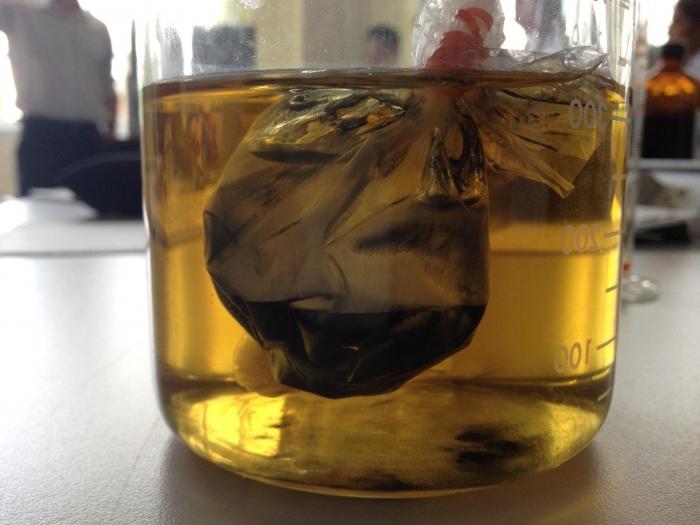The simplest of sugars, the universal currency of energy exchange, which the brain prefers and respects the heart muscle. If a person’s control mechanisms are violated, and the blood
glucose level falls below a certain norm, there is a loss of consciousness and inevitable death. Diabetes mellitus as a pathology for the assimilation of this substance leads to "hunger in the midst of plenty." Therefore, food containing glucose should be treated with caution not only for diabetics - sugar metabolism regulation systems are complex.
She is closely studied in courses in organic chemistry, bioorganic chemistry and biochemistry. What is glucose? Its chemical properties stem from the structural features. They are twofold - it simultaneously has both an aldehyde group and a hydroxyl group, that is, in fact, it is both an aldehyde and a polyhydric alcohol (since the groups of both the first and second types are not alone in its composition).

Begin with aldehyde properties. Unlike fructose, glucose demonstrates the chemical properties of the aldose type - that is, with it you can safely carry out the reaction of a silver mirror. This is an unusually beautiful reaction, requiring the purity of reagents and equipment. In this case, from an ammonia solution of silver bound in a complex, a metallic solution is obtained. If everything was clean, it turns out a beautiful smooth film, similar to a mirror, which caused the appearance of the name. But if something was not clean, then we get loose lumps of gray mass, ugly and able to mislead an inexperienced experimenter. So wash the tubes properly!
What else can glucose do? The chemical properties of the aldehyde type are not limited to the reaction of a silver mirror. Another very characteristic reaction is hydrogenation, that is, the addition of hydrogen to the aldehyde group in the presence of a nickel metal catalyst. In this case, sorbitol alcohol is formed. By the way, this is an industrial method for its production, cheap and uncomplicated, however, the starting material is complex corn starch, not pure glucose, but starch is hydrolyzed to it.
Glucose has at least two aldehyde properties. Chemical properties that prove the alcoholic nature of this substance also exist. For example, a qualitative reaction to a hydroxyl group. It is quite simple to add copper hydroxide to the test sample in an alkaline medium . In this case, if glucose is present, a copper precipitate is not formed, but a saturated bright blue solution is obtained. This reaction is evidence of the alcoholic properties of glucose.
But there is another interesting reaction that is provoked by yeast and which almost everyone has encountered. What does glucose do? Chemical properties are closely related to biology. Under the influence of enzymes, ethanol is formed, fungi destroy two compounds in each molecule, causing the formation of carbon dioxide. These are the chemical properties of glucose. This produces a characteristic odor: just smell the yeast dough - and make sure that it really has enough ethanol.
Is glucose complex? The physical and chemical properties of it are quite predictable, based on their formulas, but the substance stores many mysteries: for example, the body’s non-assimilation of certain forms.